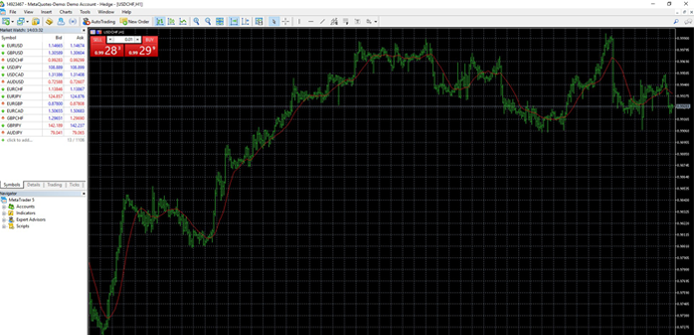Risk Managment
WHAT IS RISK MANAGEMENT?
In Forex trading , risk management means limiting a trader’s exposure to trades that can threaten their account. This means identifying the risk/reward ration you are willing to accept from the trades and strategies that you have set. Additionally ensuring that you always have a proper exit strategy should the trade not go in the direction you had anticipated. Deciding on a risk/reward ratio for your trades goes beyond determining how much money to invest in a position. It also means selecting the trades where the risk of the position unexpectedly moving in an unfavorable way is minimized. Properly identifying the right trade to make requires knowledge of market analysis, both Technical and Fundamental. Technical analysis makes it significantly easier to identify the potential volatility of a trade before opening it, as well as the direction it could move in. Fundamental Analysis in forex allows the trader to evaluate currencies and their countries. For example, an impending news event regarding a country or currency could create a volatile market and potentially affect the trade. After selecting the positions to open the next step of risk management, is identifying the exit points in a trade. Analyzing if the position will be profitable or not. In our next section, we will be going over how to properly use stop losses and take profits, an essential tool in forex risk management.
CONTROLLING YOUR TRADES: STOP LOSSES AND TAKE PROFITS
Despite being one of the most effective tools to managing Forex risk, many traders fail to use stop losses and take profits which leads to irresponsible trading practice.. In a world where extreme market movements can occur at any time, establishing predefined points where to exit a position is one of the simplest and most effective ways to safeguard funds and ensure a long trading career. Stop loss is exactly what its name suggests; a specific price point where a losing position will automatically be stopped and closed. With stop losses, traders can determine the maximum margin and number of pips they are willing to lose before a position is closed. Advanced traders who are more familiar with technical analysis will also place stop losses at specific points where they feel a financial asset will extend its existing trend instead of reversing, thereby taking the position deeper into losing territory.
By analyzing the example in the chart below, we could determine that a potentially good stop loss on a EUR/USD buy position would be around 1.2360, simply based on the number of times the pair unsuccessfully tried to break below that level (circled in blue). By placing our stop loss at this point, we are saying that once the pair moves below 1.2360, it will have broken its support level and could continue downward, meaning it is probably a good time to exit this position.

Figure 1: Identifying the right place to put your stop loss is one of the keys to risk management
Take profits work in the opposite way from stop losses. Instead of assigning an exit point from a losing position, traders pick a price to exit a trade at profitable position. Take profits are typically placed at points where the trader expects a position to stop being profitable, or where a trend reversal is expected to take place.
In the example below, we see that the pair unsuccessfully tried to move above the 1.8280 level twice before, (circled in blue). We can therefore say that if we are taking a buy position on the pair, a good take profit would be around 1.8280, because we do not see the pair moving above this level and a downward correction is likely to occur once it reaches it.

Figure 2: Take profits allow you to exit a profitable position before it reverses course
Too frequently traders will feel tempted to remove their take profits or stop losses because they “feel” that a position will move in their direction. This type of undisciplined emotional trading behavior which is the surest way to eliminate even the best risk management practice.


 Continue
Continue on Gold & Platinum
on Gold & Platinum
